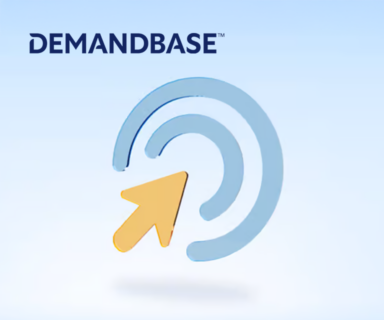 The recent B2B Marketing Exchange virtual event (June 7-10) focused on “Next-Level ABM.” Together with Content Director Andrew Gaffney, TechTarget’s CMO John Steinert got to host a virtual roundtable on intent data. This blog captures some of what they covered in the well-attended session.
The recent B2B Marketing Exchange virtual event (June 7-10) focused on “Next-Level ABM.” Together with Content Director Andrew Gaffney, TechTarget’s CMO John Steinert got to host a virtual roundtable on intent data. This blog captures some of what they covered in the well-attended session.
Andrew: Can you help us a little with understanding the different sources of signal data and how/where they can be best applied to your go-to-market (GTM) strategy?
John: Let’s first talk a little about different types of signals so we can begin to tease things apart a bit and create some apples to apples comparisons. The two big categories I like to think about are “descriptive” data and “prescriptive” insights. There are signals in both, but they’re different and the use cases for them are different. For me, “descriptive” signals tell you something about a market, an account, or even a person that has directional value – I mean it can help you better navigate the market, account, or individual. For example, I put technographics in this category. At the individual level, I put a lot of the social signals into this category as well. In my go-to-market, I use descriptive signals to inform my targeting and positioning strategies. Regarding the individual level, for a seller, for example, account signals around financing and organizational changes can help you understand the mental state of people at the account.
To me, “prescriptive” signals are substantively different. While they can be really helpful for strategy if you monitor them over time, the most obvious value in the near term is that they can tell you exactly what to do right now – who to go after, what value propositions to put forward and so on. The key thing to look for in prescriptive data is how granular it is at the individual level and regarding the groups of people we all know make up a buying team and a buyer’s journey.
Andrew: How are use cases for signal data changing or expanding – are they becoming more widely used across marketing or sales?
John: Marketing continues to innovate with signal data to drive advertising, outbound email, inbound conversion and a lot more. In reality, this is a natural evolution of how we’ve used first-party signals in our systems all along. On the other hand, in terms of the numbers of users involved, the adoption of signal data by sales organizations is quickly outstripping marketing organizations. This is because of the tactical value of the signals for driving things like call patterns, cadence design and sales messaging. Since each salesperson’s territory is essentially a micro-ABM list, the value of up-to-date insights on an account and the people inside it is super powerful.
Andrew: What are some of the cutting-edge ways companies may not have thought of to apply the signal data they are gathering?
John: There are a lot, so let me just talk about three or four.
One of the challenges I think we all know about is that a lot of our lead management processes are pretty old-fashioned and there are a lot of things we do in lead management that can be counterproductive. For example, we often don’t pursue accounts where we have very strong signals but no leads. Since traditional nurture is pretty slow, companies are using signal data to fuel automated nurture with tools like Conversica and Exceed.ai to get more engagement without using SDRs.
Both inside stacks and from the data vendors themselves, teams are using signals to trigger alerts sent directly to account owners on the sales side. They’re combining automation tools like Zapier, Tray.io or Workato with communications tools like Microsoft Teams and Slack to do this.
There’s the whole RevOps area, where Clari, People.ai, and even customer support apps, are making progress. Right now, these systems are largely focused on bringing clarity to the client’s first-party interactions with people and accounts, but people are starting to look at adding second-party signal data to both the opportunities in their pipelines and the account relationships they’re trying to optimize.
Lastly – and this is probably the most obvious – signal data is, of course, becoming really important in the sales outreach space, combined with things like call analytics, content selection and the like.
Andrew: Best practices for addressing topics with intent data?
John: As is the case with a lot of fast-moving categories in the martech/salestech sphere, it’s important to recognize that the term “intent data” describes a lot of different types of signals as well as combinations of signals. The thing to be aware of is that the value you can get out of any particular type or combination depends very much on what the signal can tell you and how the users will be able to use that in your organizations and processes. For example, what I call descriptive signals are often used by planners in combination with a lot of other material to shape more macro changes. They’re just not very useful for tactics. If you’re looking to drive tactical improvement quickly, you need to look for accurate, granular signals that are easy for people to take immediate action on.
These granular signals are what “topics” are about. At TechTarget, we actually call these “Entry Points” because they are where a client has the best possible chance of getting into a deal and then winning it. These topics are selected using a combination of what we know about a given market having analyzed what’s happening there – we do this every day as a publisher and research organization – together with what our clients can tell us about their solutions and where they compete or win. From this, we create topics that are tags for identifying and calling out specific accounts and people in them, at the moment they consume related content. A topical signal like this can come from the client’s content, our editorial content or competitor content. When a client sees this activity, they know exactly when and how to prioritize their actions.
Andrew: How are companies balancing signal data on accounts with the need to connect at the contact level?
John: When you’re trying to prioritize your actions within a group of accounts, account-level signals are certainly better than nothing. People have been using anonymous web traffic this way for many years. Still, for me, anonymous account data is a lot more descriptive than it is prescriptive, at least when you look at it from the perspective of a sales team or a salesperson. As part of the go-to-market team, we have a responsibility to think about how we can increase productivity and yield across the whole cycle. So, anything we can do to reduce non-selling time for sellers is super valuable. One huge difference between contact-level signals and account-level signals is that contact-level can tell a salesperson exactly who to target with what message right now. It’s extremely prescriptive. And that saves a ton of time because not only does it help prioritize accounts inside any seller’s territory, it helps them identify real buyer’s journeys in the making and then efficiently bring the people involved together.




